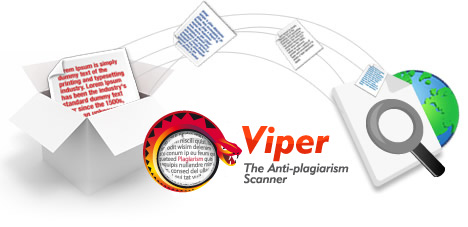Uji Adaptasi Hybrid Ulat Sutra asal Tiongkok (Adaptation Test of Hybrid Silkworm from China)
Sari
ABSTRACT
One of the factors that determine the success of the natural silk development in Indonesia is the supply of superior silkworm eggs. It can be done through the procurement of superior eggs both from domestic and imported. Superior silkworm eggs must have high quality and productivity. This study aims to examine the productivity and quality of hybrid silkworm eggs of the Liangguang II originating from China with the commercial local hybrid C301 and other commercial hybrids. The study was conducted at the Natural Silk Development Station, Garut Regency, West Java. The results showed that the Liangguang II hybrid had better larva quality than the local commercial hybrid C301. The Liangguang II hybrid had a shorter larval period of 1 day 2 hours, better cocoon quality, higher cocoon quality, and the same filament quality as the C301 hybrid. The Liangguang II hybrid had a higher percentage of cocoon shells (22.19%) compared to imported F9X7 hybrids from China (20.96%) and Bulgarian hybrids (19.26%). The Liangguang II hybrid is recommended to be developed in the highlands in West Java.
Keywords: Productivity, commercial, imported hybrid, silkworm eggs
ABSTRAK
Salah satu faktor yang menentukan keberhasilan pengembangan persutraan alam di Indonesia adalah pemenuhan bibit ulat sutra unggul. Untuk memenuhi kebutuhan tersebut, maka dapat dilakukan pengadaan bibit unggul yang berasal baik dari dalam negeri maupun impor. Bibit unggul harus memiliki kualitas dan produktivitas yang tinggi. Penelitian bertujuan untuk menguji produktivitas dan kualitas bibit ulat sutra hybrid Liangguang II asal Tiongkok dibandingkan dengan hybrid lokal komersial C301 dan hybrid lainnya. Penelitian dilakukan di Stasiun Pembinaan Persutraan Alam, Kabupaten Garut, Jawa Barat. Hasil penelitian menunjukkan bahwa bibit hybrid Liangguang II memiliki kualitas ulat yang lebih baik dari hybrid lokal komersial C301. Hybrid Liangguang II memiliki masa larva yang lebih pendek 1 hari 2 jam, kualitas kokon lebih baik, produktivitas kokon lebih tinggi, dan kualitas filamen sama dengan hybrid C301. Hybrid Liangguang II memiliki persentase kulit kokon (22,19%) lebih unggul dibandingkan dengan hybrid impor jenis F9X7 asal Tiongkok (20,96%) dan hybrid Bulgaria (19,26%). Hybrid Liangguang II direkomendasikan untuk dikembangkan di dataran tinggi di Jawa Barat.
Kata kunci: Produkitivitas, komersial, hybrid impor, telur ulat sutra
Kata Kunci
Teks Lengkap:
PDFReferensi
Andadari, L., & Kuntadi, K. (2014). Perbandingan hybrid ulat sutera (Bombyx mori L.) asal Cina dengan hybrid lokal dI Sulawesi Selatan. Jurnal Penelitian Hutan Tanaman, 11(3), 173-183. https://doi.org/10.20886/jpht.2014.11.3.173-183
Andadari, L., Muin, N., Pudjiono, S., Dewi, R., & Sari, H. (2014). Standar Operasional Prosedur (SOP) budidaya tanaman murbei (Morus spp) dan ulat sutera (Bombyx mori L.) (M. Kaomini (ed.)). Forda Press.
Andadari, L., & Sunarti, S. (2015). Kualitas kokon hasil persilangan antara ulat sutera (Bombyx mory L.) ras Cina dan ras Jepang. Jurnal Pemuliaan Tanaman Hutan, 9(1), 43-51. https://doi.org/10.20886/jpth.2015.9.1.43-51.
Andadari, L., Ekawati, D., & Kuntadi. (2016). Kualitas kokon bibit hybrid ulat sutera (Bombyx mori L.) asal Bulgaria dan Indonesia. Prosiding Seminar Nasional PEI, 179-182.
Andadari, L. (2016). Pemilihan jenis hybrid ulat sutera yang optimal untuk dikembangkan di dataran tinggi dan/atau dataran rendah. Jurnal Penelitian Hutan Tanaman, 13(1), 13-21.
Arief, A.M. (2019). Industri kain sutra : perajin kesulitan bahan baku Sejak 2000. Bisnis.Com. https://ekonomi.bisnis.com/read/20190321/257/902630/industri-kain-sutera-perajin-kesulitan-bahan-baku-sejak-2000
Atmosoedarjo, S., Kartasubrata, J., Kaomini, M., Saleh, W., & Meordoko, W. (2000). Sutera alam Indonesia. Yayasan Sarana Wana Jaya.
Badan Standarisasi Nasional. (2010). SNI 7635: 2010 Kokon Segar Jenis Bombyx mori L.
Balai Pesutraan Alam. 2010. Pedoman Teknik Budidaya Sutra Alam.
Chauchan, T., & Tayal, M.K. (2017). Mulberry sericulture. In Omkar (Ed.), Industrial Entomology (pp. 1-465). springer nature Singapore Pte. Ltd. https://doi.org/10.1007/978-981-10-3304-9
Chen, H.J., Ying, S., Jun, L., Lixia, M., Zou, Y.X., & Liao, S.T. (2014). Changes of 1-deoxynojirimycin with hypoglycemic activity in silkworm (Bombyx mori L.) during different developmental stages. Medicinal Chemistry, 4(9), 630-634. https://doi.org/10.4172/2161-0444.1000205.
Harbi, J., Nurrochmat, D. R., & Kusharto, C.M. (2016). Pengembangan usaha persuteraan alam Kabupaten Wajo, Sulawesi Selatan. Risalah Kebijakan Pertanian Dan Lingkungan, 2(2), 129–136. https://doi.org/10.20957/jkebijakan.v2i2.10983
Hartati. (2015). Analisis Fenotip Ulat Sutera (Bombyx mori L.). In Analisis fenotip ulat sutera (Bombyx mori L.)(Cetakan I). Global Research and Consulting Institute.
Mirhosseini, S.Z. Nematollahian, S., Ghanipoor, M., & Seidavi, A. (2010). Comparison of phenotypic and genetic performance of local silkworm groups and two commercial lines. Biological Research, 43(4), 411-416. https://doi.org/10.4067/S0716-97602010000400005
Noerati, Gunawan, Ichwan, M., & Sumihartati, A. (2013). Teknologi Tekstil. In Bahan Ajar Pendidikan dan Pelatihan Guru (p. 390). Sekolah Tinggi Teknologi Tekstil.
Qin, D.Y., Wang, G.H., Dong, Z.M., Xia, Q.Y., & Zhao, P. (2020). Comparative fecal metabolomes of silkworms being fed mulberry leaf and artificial diet. Insects, 11(12), 1-15. https://doi.org/10.3390/insects11120851
Sajgotra, M., Verma, G., & Vikas Gupta. (2018). Comparative effect of feeding frequency on economic traits of bivoltine silkworm, Bombyx mori L. Journal of Entomology and Zoology Studies, 6(3), 1678-1682.
Sudan, K., & Bukhari, R. (2021). Comparative study of nutritional, climatic and economical factors on growth and development of silkworm (Bombyx mori L.). Uttar Pradesh Journal Of Zoology, 42(4), 44-52
DOI: https://doi.org/10.20886/jpht.2021.18.2.147-158
##submission.copyrightStatement##
JURNAL PENELITIAN HUTAN TANAMAN INDEXED BY:
Copyright of Jurnal Penelitian Hutan Tanaman (JPHT)
eISSN : 2442-8930 pISSN : 1829-6327
JPHT is licensed under a Creative Commons Attribution-NonCommercial-ShareAlike 4.0 International License.

